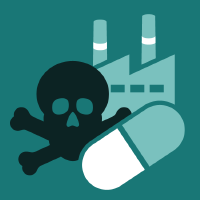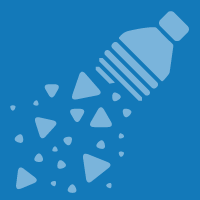Topic Editors


Plastics, Water-Soluble Polymers and Rubberized Materials: Ecotoxicological Aspects in the Aquatic Environments
Topic Information
Dear Colleagues,
We propose a Topic about the impacts of conventional and non-conventional plastics in the aquatic ecosystems. This Topic will group scientific peer-review articles from Journal of Xenobiotics, Journal of Marine Science and Engineering, Water, Toxics and Microplastics.
In the last years a great attention has been posed by scientific community on the environmental impact of plastics on the aquatic environments. However, other investigations are needed in this field, especially in freshwater ecosystems, to better characterized both the presence and toxicity of these emerging pollutants in the continental areas, which represent the main plastic source toward Oceans.
On the other hand, despite the pollution of conventional plastics start to be well known, some controversial substances, represented by the so-called Water-Soluble Polymers (WSPs), need more attention from the ecotoxicological point of view. Indeed, being water-soluble, these polymers escape from the current legislations to contain (micro and nano)plastic pollution, and very few evidence is available in scientific literature about their environmental toxicity. In this context, also the tire particles are not grouped among conventional plastics, being rubber of natural origin, and they require more ecotoxicological investigation due to the plethora of toxic chemicals adsorb by these physical pollutants during the activity of transport means.
Based on these brief considerations, the aim of the proposed Topic is the grouping of articles that answer to the following key questions: (i) Monitoring of conventional plastics in the aquatic environments, with particular attention to fresh- and marine waters (ii) Identification of new suitable methods for the monitoring of non-conventional plastics, as WSPs and tire particles, whose detection is negatively affected by the lack of analytical methodologies (iii) Evaluation of adverse effects of both conventional and non-conventional plastics on aquatic species using biomarkers, “omics” techniques and standardized ecotoxicological tests.
Research papers, reviews and short communications will be accepted in this field.
Dr. Stefano Magni
Dr. François Gagné
Topic Editors
Keywords
- aquatic ecosystems
- emerging contaminants
- plastics
- (micro)plastics
- (nano)plastics
- water-soluble polymers
- tire particles
Participating Journals
| Journal Name | Impact Factor | CiteScore | Launched Year | First Decision (median) | APC | |
|---|---|---|---|---|---|---|

Journal of Marine Science and Engineering
|
2.7 | 4.4 | 2013 | 16.9 Days | CHF 2600 | Submit |

Journal of Xenobiotics
|
6.8 | 5.3 | 2011 | 30 Days | CHF 1600 | Submit |

Microplastics
|
- | - | 2022 | 20.8 Days | CHF 1000 | Submit |

Toxics
|
3.9 | 4.5 | 2013 | 15.6 Days | CHF 2600 | Submit |

Water
|
3.0 | 5.8 | 2009 | 16.5 Days | CHF 2600 | Submit |

MDPI Topics is cooperating with Preprints.org and has built a direct connection between MDPI journals and Preprints.org. Authors are encouraged to enjoy the benefits by posting a preprint at Preprints.org prior to publication:
- Immediately share your ideas ahead of publication and establish your research priority;
- Protect your idea from being stolen with this time-stamped preprint article;
- Enhance the exposure and impact of your research;
- Receive feedback from your peers in advance;
- Have it indexed in Web of Science (Preprint Citation Index), Google Scholar, Crossref, SHARE, PrePubMed, Scilit and Europe PMC.

